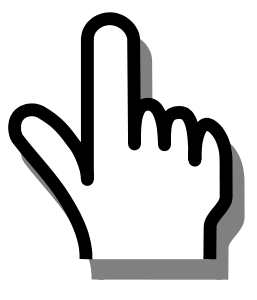
RAILF - Romanian Automation & Instrumentation - Laboratory Fair

Why should you exhibit?
There are many companies both in Romania and abroad who choose participation in an exhibition, trade fair, conferences and symposia, for it is pleasant, because others do or because it is cute. Of course, making the decision to participate on such criteria is a solid foundation as like any other, but it is likely that evaluation and efficient participation remain so elusive.
Participation in such events should aim to achieve the greatest possible targets or benefits, pursued by the exhibitor / participant. General categories include visibility, credibility, potential new customers, strengthen relationships with existing customers, market research, prospecting competitors, brand image, contracting, networking, etc.
For efficiency, we grouped these benefits into four broad categories as follows:
1. Exhibitions / events generate important leads with real impact on business
By applying a correct strategy, any participation in a commercial event is an opportunity to broaden the customer base and partners, both actual and potential. Visitors are usually motivated specialists and are interested in the products, technologies, solutions and services offered by your company, and in some cases the possibility to contract on the sport.
By contrast to the research and compiling of a database from various sources, according to certain criteria interpreted differently by various sources of information, the specialist visitors to a trade event are actually interested in a deal, now or in the future.
Set clear and realistic targets for the sales team attending the event before participation. A successful participation can generate an activity of prospecting and tender a few months for the sales team.
Key elements:
- Set sales targets before the event to give the team a clear goal
- Interact with all professional visitors because any of them could become customers
- Keep notes of these meetings so that you can track developments after the event
2. Learn what works (and what does not work)
Fairs and exhibitions are good opportunities to find out in which direction the industry is developing. During a less intense period, pay a visit to your competitors, trying to find out what they do better, worse or different than you do.
Try to determine the type of promotional materials that people remember and those they forget. Approach your competitors from the client's posture to obtain price lists and information on the latest products. After several hours of research, you can identify the sales strategies and marketing tactics of your competitors.
Key elements:
- Identify stands that attract most visitors and identify their tactics
- Make notes about your offers and special preţurila offered by your competitors to assess your own competitiveness
- Put yourself in the position of client and assess how they interact with your other vendors and their goals
3. Develop and strengthen your brand
Branding is a very important factor for success, especially in industries that depend on trust and reputation. Exposure to a fair or exhibition is a great way to tell the industry that your company is serious, reliable and strong enough to support an attendance at major events and conferences.
Exhibiting by leveraging strategic products and services, you can position the company as part of a niche market, differentiating yourself from the competition and thus their products. Positioning your stand near the "blue chip" of your industry creates a strong psychological link, which can create suggestive associations in the mind of your customers and potential competitors.
Key elements:
- Position your stand close to the companies perceived as "blue chip" in your industry
- Use attractive banners, recognizable to make stand clearly visible and recognizable for your customers
- Include information from Social Media so that event participants can connect with your company online
4. Contract without being annoying
Not all prospects respond positively to telesales or direct mailing. Some see direct marketing as an intrusion in their lives, while others are visibly bothered by sales calls, regardless of how much value they could provide.
Exhibitting at a fair or exhibition offers the sales team a high level of access to key prospects without the resentment or reserves that characterize the traditional direct sales approach. Typical objections disappear because customers are in a mindset focused on prospecting for acquisitions.
Key elements:
- Try to close deals on the spot to capitalize on the mood of the visitors focused on acquisitions
- Approach direct sales, do not forget that most of the visitors are already interested in your products or services
- If you can not convert a sale during the event, try to set appointments with the interested visitors in the following week after the commercial event
RAILF-Romcontrola 2016
Why visit ?
- you will learn the latest news - you will test the latest solutions - you get the best offers quickly and with minimum effort - you network - you interact with professionals only
What can you get ?
- extra-competitiveness - significant discounts for exclusive products and solutions - scientific knowledge at the Symposium - access to information - an exceptional professional experience
Newsletters

RAILF 2016
View at this linkRAILF 2015
02 October 2015 - view at this link. 15 September 2015 - view at this link. 28 July 2015 - view at this link. 10 July 2015 - view at this link. 05 July 2015 - view at this link. 29 June 2015 - download pdf formatRAILF 2014
20 January 2014 - download pdf format 20 December 2013 - download pdf formatRAILF 2012
27 April 2012 - download pdf format 18 April 2012 - download pdf format 21 March 2012 - download pdf format 15 February 2012 - download pdf format 31 January 2012 - download pdf formatRAILF 2011
28 April 2011 - download pdf format 11 April 2011 - download pdf format 17 March 2011 - download pdf format

















